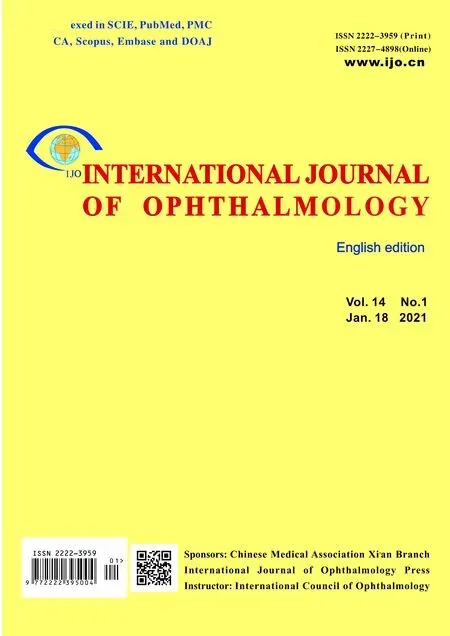Comment on “Early results of circularity and centration of capsulotomy prepared by three diあerent methods”
Hesam Hashemian
Farabi Eye Hospital, Ghazvin Sq., Tehran 13214565, Iran
Dear Editor,
The nice manuscript of Reddyet al[1]regarding comparison of capsulotomy using three diあerent techniques raises some issues which I will discuss in short. Use of newer technologies in phacoemulsification is always of interest to researchers and the authors have compared three techniques which will help us choose the best technique. The study is properly designed and analyzed. I was impressed by detailed analysis and discussion.As correctly mentioned in limitation section two limitations may aあect the analysis. First when you exclude patients with pupillary diameter less than 6 mm from femtosecond group. As surgery is more challenging in small pupil group; this exclusion criteria leads to having more challenging patients in one group compared to other groups. If the authors have excluded small pupils in all three groups, the bias have been avoided.
The second issue is analysis of inter-eye correlation. Studies of the eye are different from other studies in an important issue that is we have two eyes that can each be individually treated. So, they provide two data sets that may be treated as two diあerent subjects. Researchers correctly analyze the data acquired from two eyes of one subject. On the other hand the provided data from both eyes are positively correlated[2-4]. It means the data collected from one eye is more likely to be similar to the other eye of the same patient compared to an eye from another patient[5]. In an exaggerated representation you can say entering two eyes of on e patient to an analysis is somehow like entering an eye twice in analysis. So, we should not analyze the data of two eyes of one subject in the same way that we analyze data from two eyes of diあerent individuals.
The main drawback of bypassing analysis of intraocular correlation is overestimation (or underestimation if the patient with two eyes in study who has risk factor of complicated surgery falls in group of uncomplicated results) of significance of relationship between variables.
If you have one patient that is prone to have complicated cataract surgery in one group due to a general condition like obesity. If two eyes of the same patient have entered the study in same group; patients of this group will be more prone to complication and if you want to measure an outcome which is somehow related to complication rate of cataract surgery thePvalue of diあerence will be lower. It will also lower standard deviation and standard errors and narrow the confidence intervals resulting in improper interpretation of results.
One last issue is that do published studies take this issue into account. In 1995, 90% of 67 published manuscript analyzed both eyes without considering inter-eye correlation[6].
Nowadays that newer statistical methods including mixed effect model and generalized estimating equations[6-7], have been proposed for analyzing correlated data, we should hope for fewer and fewer articles with this kind of bias.
Unfortunately, 89% of 56 papers published in 2017 did not consider this issue[5]. So, this issue has not been solved in the past two decades. I hope the letters of this type can draw researchers’ attention to this issue.
ACKNOWLEDGEMENTS
Conflicts of Interest: Hashemian H,None.
 International Journal of Ophthalmology2021年1期
International Journal of Ophthalmology2021年1期
- International Journal of Ophthalmology的其它文章
- Instructions for Authors
- Comment on “Impact of ultrasound and optical biometry on refractive outcomes of cataract surgery after penetrating keratoplasty in keratoconus”
- Reviewer Acknowledgements
- Endothelial keratoplasty combined with scleral fixation intraocular lens
- A direct observation of aqueous humour flow in vivo after implantable collamer lens with a central hole implantation
- Sustained-release drug delivery systems for the treatment of glaucoma
